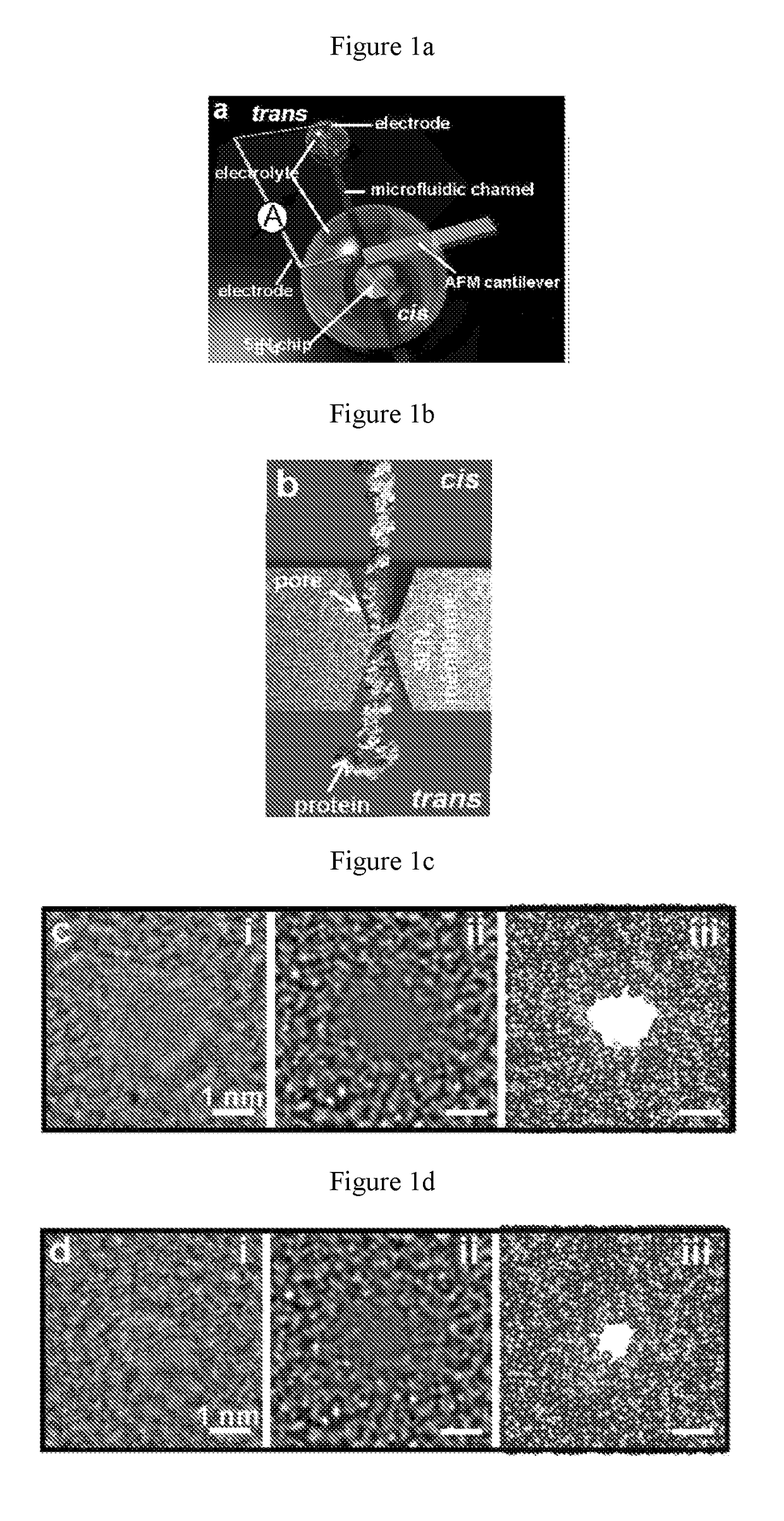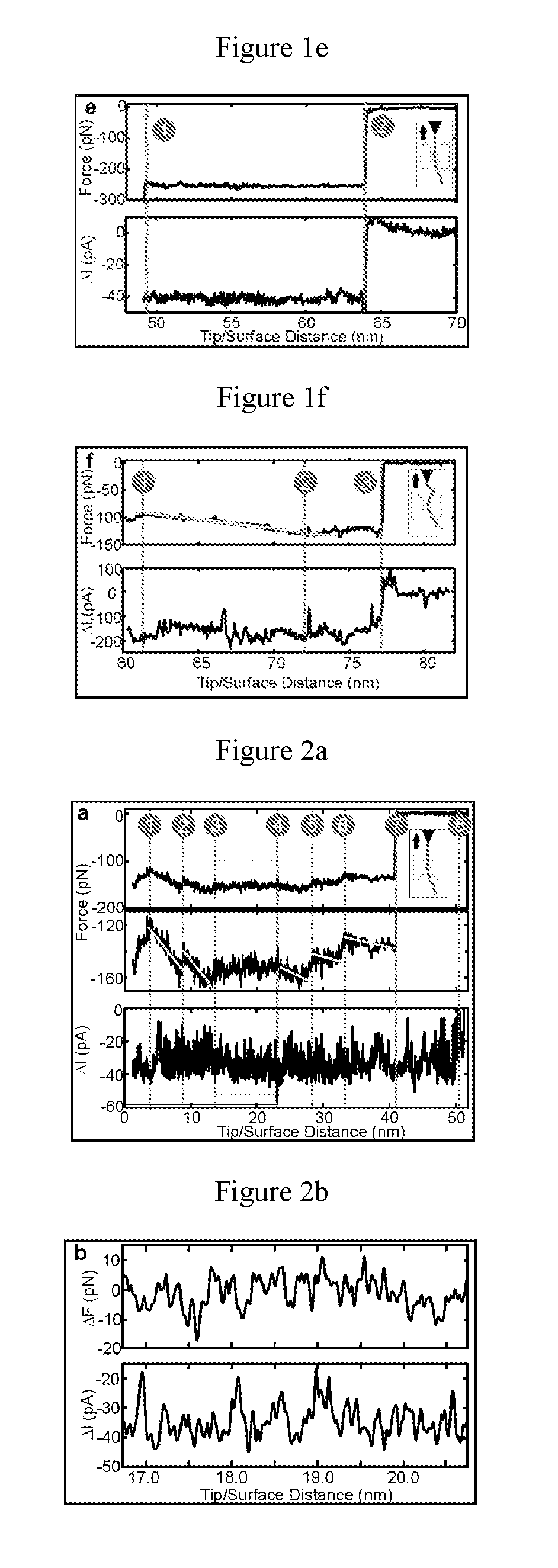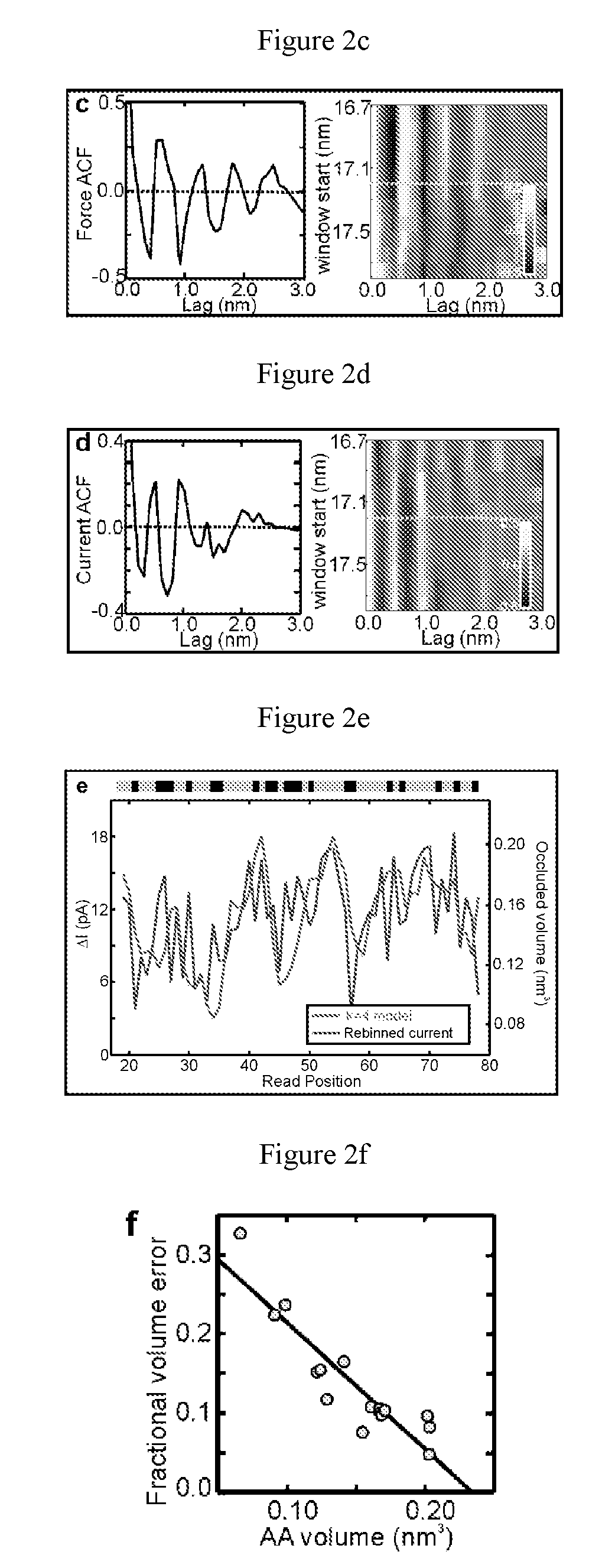A picometer-diameter pore in an inorganic membrane for sequencing protein
a picometer and inorganic membrane technology, applied in the field of tools, materials and methods, can solve the problems of inconvenient use in clinical applications, inability to use ed for sequencing peptides, increasing computational complexity, etc., and achieves the effect of enhancing the detection of relatively weak blockade signals, reducing the cross-section of picopores, and improving the detection of aas
- Summary
- Abstract
- Description
- Claims
- Application Information
AI Technical Summary
Benefits of technology
Problems solved by technology
Method used
Image
Examples
example 1
ons in the Forces, Currents and Noise Characterizing the Translocation of a Single Protein Molecule Through a Sub-Nanopore
[0079]In the present example, the force and blockade current characterizing the translocation of a single protein molecule, tethered to the tip of an atomic force microscope (AFM) cantilever, were measured as the molecule was impelled systematically through a thin inorganic membrane having pores of a sub-nanometer size (“sub-nanopore” size pores). The force measurements revealed a dichotomy in the translocation kinetics: either the molecule slid nearly frictionlessly through the pore or it slipped-and-stuck. When the molecule translocated frictionlessly through a sub-nanopore, periodic fluctuations were observed in force and blockade current with lags that corresponded to the separation between AAs, and the amplitudes of the fluctuations in the blockade were correlated with the occluded volume of short lengths of amino acids, specifically four amino acid length s...
example 2
the Sequence of Amino Acid Quadromers in Protein Molecules Using a Sub-Nanometer-Diameter Pore
[0127]The primary structure of a protein consists of a sequence of amino acids (AAs) that essentially dictates how the protein folds and functions. Here, it is shown that the sequence of AA quadromers in a denatured protein molecule can be determined using a pore with a sub-nanometer diameter (a sub-nanopore) in a thin inorganic membrane. When a sub-nanopore is immersed in electrolyte and a voltage is applied across it, measurements of a blockade in the current, associated with the translocation of a protein molecule, reveal nearly regular fluctuations, the number of which coincides with the number of residues in the protein. Furthermore, the amplitudes of the fluctuations are highly correlated with the volumes occluded by quadromers (four AA residues) in the protein sequence. Scrutiny of the fluctuations reveal that a sub-nanopore is sensitive enough to detect the occluded volume related t...
example 3
g Antibodies with a Synthetic Sub-Nanometer Pore Inorganic Membrane
[0169]The specificity of an antibody for an antigen is exquisitely sensitive to the antibody amino acid (AA) sequence, post-translational modifications (PTMs) of it and rearrangements of the structure. Whereas high-throughput DNA sequencing is routinely used to indirectly inform on the primary structure and diversity of antibodies,(81, 82) PTMs and structural rearrangements (as occurs with 1gG4) require direct analysis of the protein itself:(83) The methods used prevalently for sequencing protein directly, mass spectrometry (MS) and Edman degradation (ED), suffer limitations associated with short reads and demand concentrated samples.
[0170]This example provides a tool that uses a sub-nanometer diameter pore through a thin, charged membrane to directly sequence the AAs and PTMs in a single antibody molecule by measuring fluctuations in the blockade current when the molecule is impelled through the pore. The sequence f...
PUM
 Login to View More
Login to View More Abstract
Description
Claims
Application Information
 Login to View More
Login to View More - R&D
- Intellectual Property
- Life Sciences
- Materials
- Tech Scout
- Unparalleled Data Quality
- Higher Quality Content
- 60% Fewer Hallucinations
Browse by: Latest US Patents, China's latest patents, Technical Efficacy Thesaurus, Application Domain, Technology Topic, Popular Technical Reports.
© 2025 PatSnap. All rights reserved.Legal|Privacy policy|Modern Slavery Act Transparency Statement|Sitemap|About US| Contact US: help@patsnap.com



